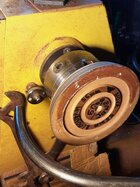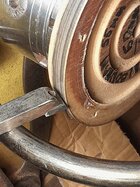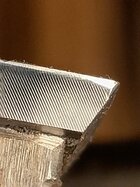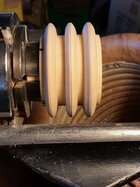.
This posting is a spinoff from my ventures into sharpening tungsten carbide bowl gouges and posted here separately for the carbide insert users who may not venture there… :~}
Of course, there is nothing new about diamond being used by woodturners in the form of diamond plates for touching up HSS turning tool and carbide tip edges, me included.
But, what I haven’t seen in any discussion on the forum is the re-sharpening of carbide inserts with diamond paste on a power hone. You can get the diamond in the form of loose graded grit and mix it yourself into a preferred consistency with wax/oil or buy it already mixed into a paste. Either way it is readily available and relatively inexpensive now.
You could use it like that on a piece of flat of shaped soft fine grained wood into which the diamond particles will embed themselves, but that doesn’t take you much beyond the diamond plates.
The next step up from there is to make a hard hone disc from a material like soft fine grained wood or high density fibreboard (HDF) and mount that on something like a chuck and use it on the lathe. You can shape (turn) it in any way that matches the TC inserts that you are re-sharpening.
Unlike a diamond wheel or sintered diamond disc, the HDF or wood buff must be used with it rotating away from the cutting edge or it will dig in (big time!)
Experimenting with this yesterday I used 20 micron diamond paste and put a really sharp edge back on a blunt carbide insert. Here is the insert edge after buffing for 15 seconds...
Under that magnification you can see the original grind lines on this carbide insert (from Arizona Carbide), which you can't readily see without magnification, and the edge polished to 20μm.
I rarely use carbide inserts, so this is not something I will be regularly doing myself, but it might be of interest to others. A buff with a concave on the rim that is matched to the diameter of a round/cup carbide insert could be used for those. They would need to be rotated... whether a version of the following mandrel could be made so that the cup was held upside down but rotated freely would be something to develop for the cup cutters.
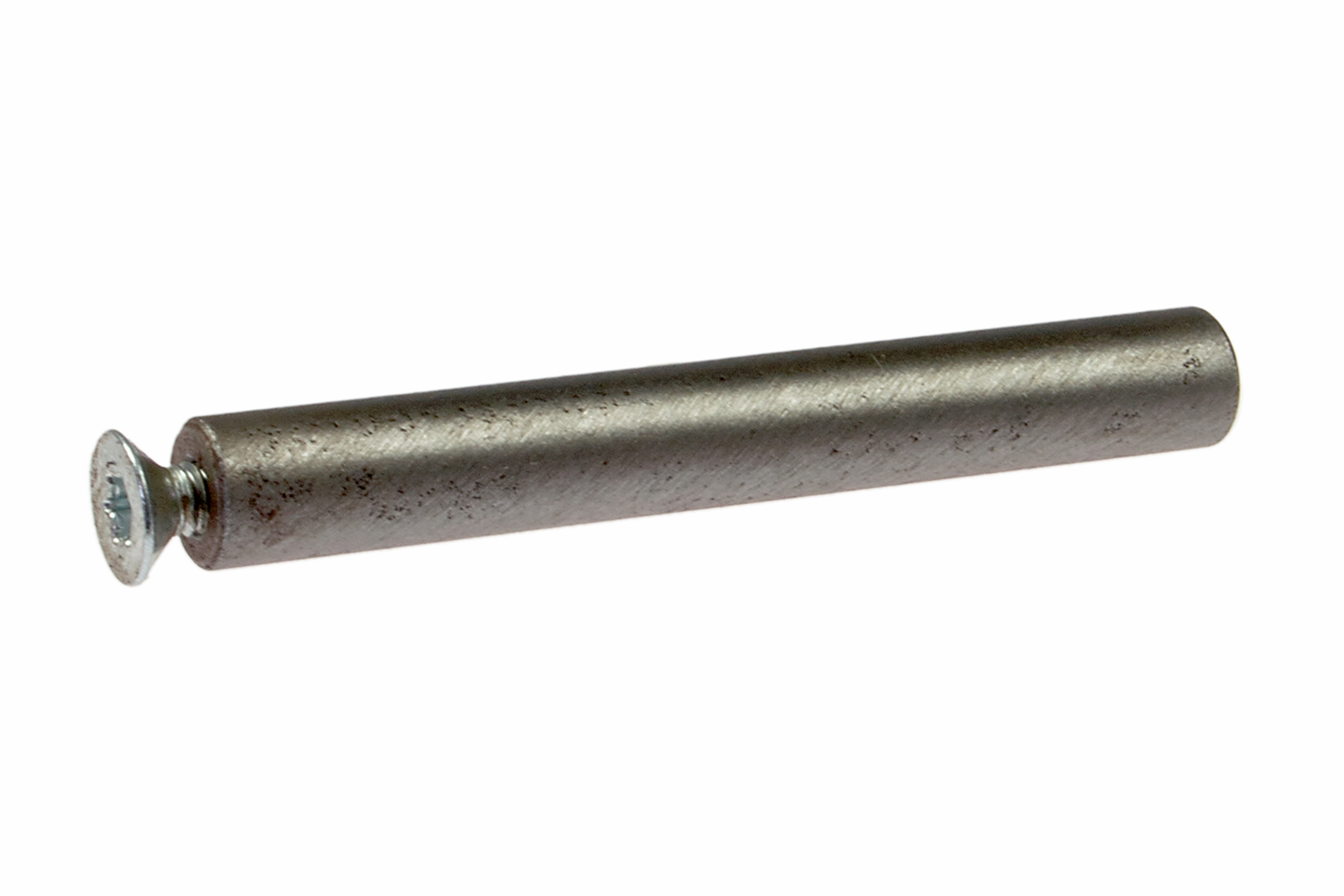
 drechslershop.de
drechslershop.de
What lead me to this byway was my investigation into sharpening methods for bowl gouges made from TC. What I found there is that I could put a very sharp edge back on those by buffing the flute first on the following profile then the bevel edge... 5 secs in the flute followed by 10 secs on the bevel.
This posting is a spinoff from my ventures into sharpening tungsten carbide bowl gouges and posted here separately for the carbide insert users who may not venture there… :~}
Of course, there is nothing new about diamond being used by woodturners in the form of diamond plates for touching up HSS turning tool and carbide tip edges, me included.
But, what I haven’t seen in any discussion on the forum is the re-sharpening of carbide inserts with diamond paste on a power hone. You can get the diamond in the form of loose graded grit and mix it yourself into a preferred consistency with wax/oil or buy it already mixed into a paste. Either way it is readily available and relatively inexpensive now.
You could use it like that on a piece of flat of shaped soft fine grained wood into which the diamond particles will embed themselves, but that doesn’t take you much beyond the diamond plates.
The next step up from there is to make a hard hone disc from a material like soft fine grained wood or high density fibreboard (HDF) and mount that on something like a chuck and use it on the lathe. You can shape (turn) it in any way that matches the TC inserts that you are re-sharpening.
Unlike a diamond wheel or sintered diamond disc, the HDF or wood buff must be used with it rotating away from the cutting edge or it will dig in (big time!)
Experimenting with this yesterday I used 20 micron diamond paste and put a really sharp edge back on a blunt carbide insert. Here is the insert edge after buffing for 15 seconds...
Under that magnification you can see the original grind lines on this carbide insert (from Arizona Carbide), which you can't readily see without magnification, and the edge polished to 20μm.
I rarely use carbide inserts, so this is not something I will be regularly doing myself, but it might be of interest to others. A buff with a concave on the rim that is matched to the diameter of a round/cup carbide insert could be used for those. They would need to be rotated... whether a version of the following mandrel could be made so that the cup was held upside down but rotated freely would be something to develop for the cup cutters.

Munro Tool Mega2 Cutting Wheel Sharpening Holder
Clamping device for sharpening the Munro Tool Mega2 cutting wheel. Not suitable for the Munro Mega2 carbide cutting wheel.
What lead me to this byway was my investigation into sharpening methods for bowl gouges made from TC. What I found there is that I could put a very sharp edge back on those by buffing the flute first on the following profile then the bevel edge... 5 secs in the flute followed by 10 secs on the bevel.
Last edited:

